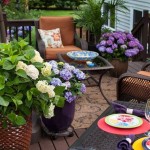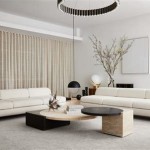How Can I Decorate My Fish Tank?
Decorating a fish tank is a multi-faceted process, requiring careful consideration of both aesthetics and the well-being of the aquatic inhabitants. The objective is to create a visually appealing environment that also mimics the fish’s natural habitat, providing enrichment and reducing stress. A well-decorated tank not only enhances the aesthetic appeal of a home but also contributes significantly to the overall health and happiness of the fish residing within.
Before exploring specific decorative elements, it is critical to establish the dimensions and the type of aquarium being used. The size significantly impacts the potential choices, as larger tanks accommodate more elaborate designs and larger decorations. The type of aquarium, whether freshwater or saltwater, will dictate the suitability of various plants, substrate, and ornaments. Thorough research into the specific needs of the chosen fish species is also paramount. This includes understanding their preferred habitat, hiding spots, and any specific environmental requirements related to water parameters or substrate type. Failure to consider these factors can lead to stress, illness, and ultimately, the premature death of the fish.
Choosing the Right Substrate
The substrate, or bottom layer of the tank, forms the foundation of the aquarium's aesthetic and functional design. The primary function of the substrate is to provide a base for plant roots, harbor beneficial bacteria, and create a sense of security for the fish. Several options are available, each with its own advantages and disadvantages. The most common choices are gravel, sand, and specialized substrates designed for planted tanks.
Gravel is a readily available and affordable option, coming in a variety of colors and sizes. It facilitates gas exchange within the substrate and is relatively easy to clean. However, gravel can trap debris, potentially leading to the accumulation of harmful substances if not properly maintained. It is also not ideal for bottom-dwelling fish that prefer to sift through the substrate for food, as the sharp edges of the gravel can damage their barbels or other sensitive features. Sand, on the other hand, provides a more natural look and feel, allowing bottom feeders to forage comfortably. It is less likely to trap debris compared to gravel, as waste tends to stay on the surface. However, sand can compact over time, potentially leading to anaerobic conditions which can be harmful. Specialized planted tank substrates offer a rich source of nutrients for plant growth and often have a buffering capacity to help maintain stable water parameters. Careful selection will depend on the type of fish and the desired tank design.
Adding Decorations: Rocks and Wood
Rocks and wood provide naturalistic elements and offer essential hiding places for fish, helping to reduce stress and create a sense of security. These decorations also contribute to the overall aquascape, creating visual interest and breaking up the monotony of a plain tank. However, it is critical to choose materials that are safe for the aquatic environment. Before introducing any rocks or wood, it is crucial to thoroughly clean and prepare them.
Rocks should be thoroughly rinsed to remove any dust or debris. If unsure about their composition, it is advisable to test them by placing them in a bucket of water with a small amount of hydrochloric acid (muriatic acid). If the rock fizzes, it may contain calcium carbonate, which can alter the water chemistry and increase the pH. Such rocks are generally unsuitable for freshwater aquariums. Wood should be properly sanitized and given sufficient time to soak in water. This process removes tannins, which can discolor the water. Boiling the wood for an extended period can expedite this process and also help to sink the wood. Driftwood is a popular choice, providing a unique look and creating opportunities for attaching plants. Proper preparation prevents these issues and secures the safety of the ecosystem.
Plants: Live vs. Artificial
Plants, whether live or artificial, are a significant component of any well-decorated aquarium. They contribute to the aesthetic appeal, provide cover for shy fish, and offer water purification benefits. Live plants, in particular, are highly beneficial, consuming carbon dioxide and producing oxygen, which helps stabilize the water chemistry and reduce nitrate levels. They also provide a natural food source for some fish and offer a more authentic, naturalistic environment.
Live plants require specific conditions to thrive, including appropriate lighting, substrate, and fertilization. Regular maintenance is also essential, including pruning and removing dead leaves. Popular choices for freshwater aquariums include various species of Anubias, Java Fern, and Amazon Swords. Artificial plants offer a low-maintenance alternative, requiring no special care other than regular cleaning. However, they do not offer the water purification benefits of live plants and may not appear as natural. When selecting artificial plants, it is essential to choose ones made from aquarium-safe materials and ensure that there are no sharp edges that could harm the fish. Both live and artificial plants can be combined to create a visually appealing and functional tank.
Prioritizing Water Quality and Fish Safety
Throughout the decorating process, maintaining water quality and prioritizing the safety of the fish should remain the top priorities. Introducing new decorations can disturb the established ecosystem and introduce impurities. Before adding any new decorations, thoroughly clean them to remove any potential contaminants. After adding decorations, monitor water parameters closely using a reliable test kit, testing for ammonia, nitrite, and nitrate levels. Changes in water chemistry, such as pH or hardness, should also be considered. Performing regular water changes is crucial to remove any build-up of toxins and maintain optimal water quality.
Consider the size of the decorations in proportion to the size of the fish. Avoid overcrowding the tank with decorations, as this can reduce swimming space and make it difficult for fish to navigate. Choose decorations that have smooth surfaces to prevent injuries. If using caves or other enclosed structures, ensure that the openings are large enough for the fish to enter and exit easily and that the fish cannot become trapped. Regularly inspect all decorations for any signs of wear and tear or degradation and replace them as needed. By meticulous consideration for fish safety and water parameters, the aquarium can become a beautiful and healthy environment.

How To Make Aquarium Decor That Is Fish Friendly

Diy Simple Aquasacpe Betta Fish For Office How To Make Aquarium Decoration Ideas Mr Decor 178
What Are Some Ideas On How To Decorate A Fish Tank Quora

How To Make Aquarium Decor That Is Fish Friendly

5 Cool Fish Tank Themes That Will Inspire You Bechewy

Best Unique Creative Aquarium Decorations For Your Tank

How To Decorate Your Boring Fish Tank Decorations Aquarium

How To Make Aquarium Decor That Is Fish Friendly

How To Decorate Your Boring Fish Tank Decorations Small Tanks Aquarium

Fish Tank Decorations A Simple Guide Aquariphiles







